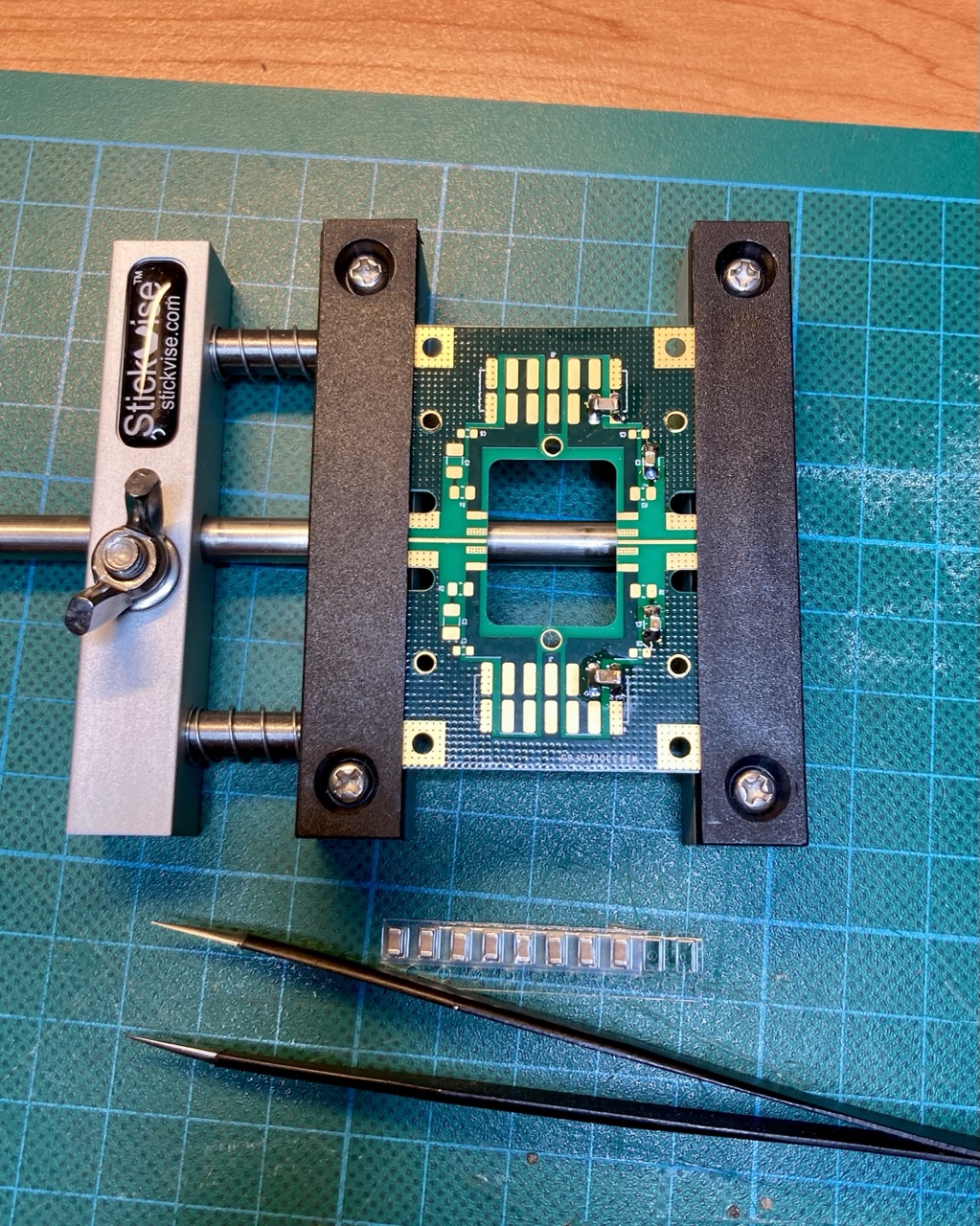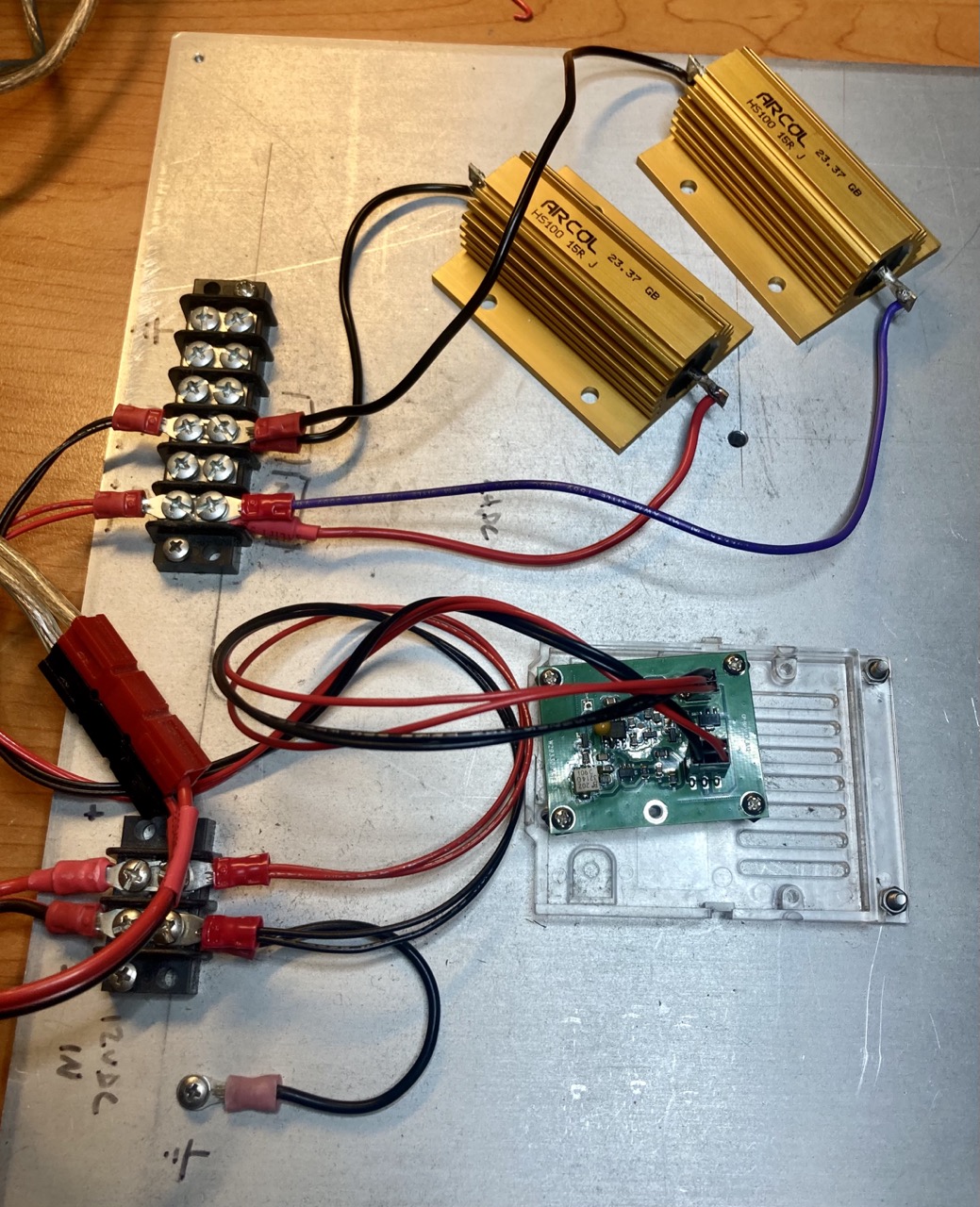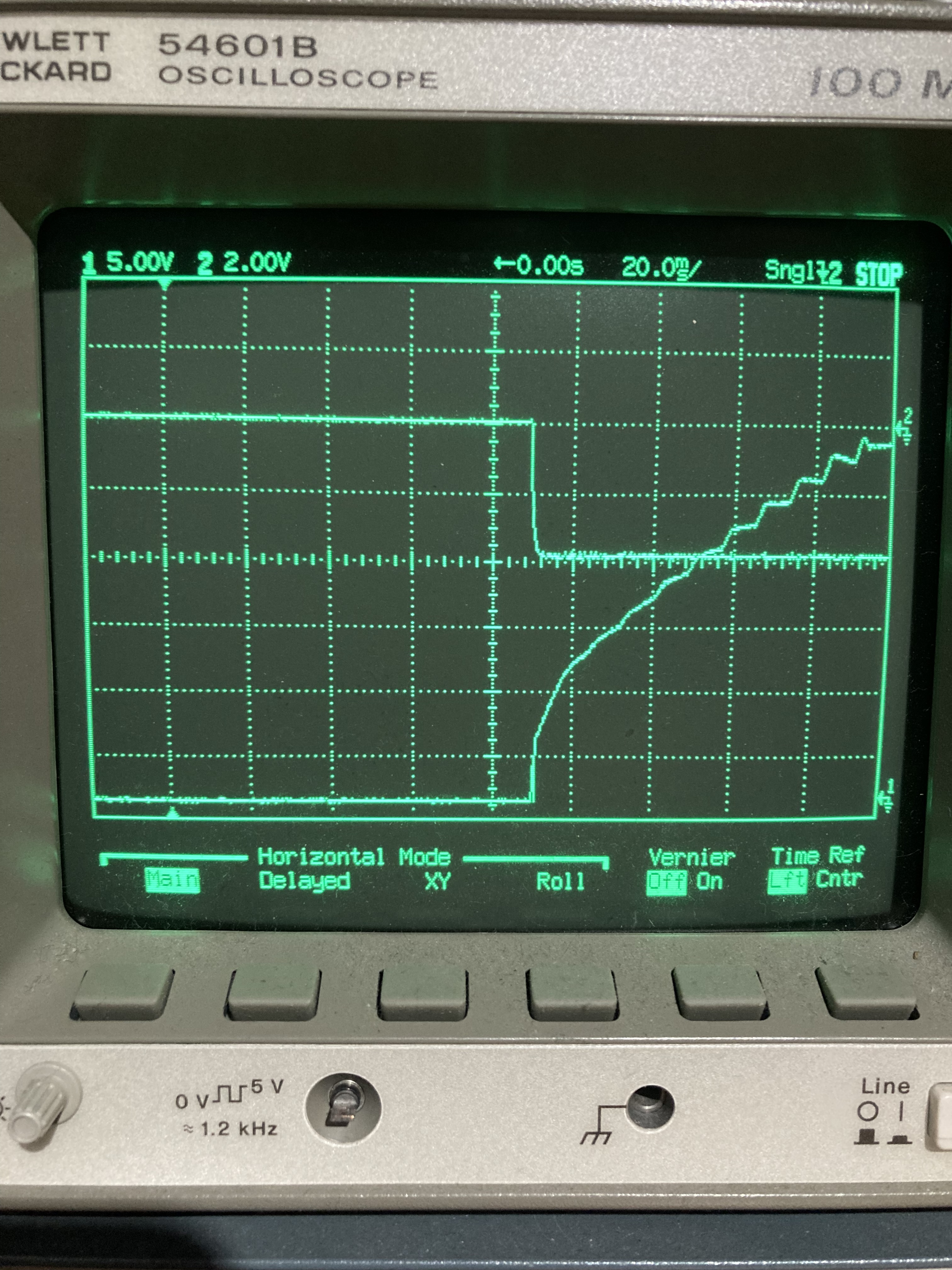Conversation
@jmorris What's the input and output wattage? If you don't mind my asking.
James Morris
jmorris
@jtfletchbot this is for a TGA2623-CP device (yet to arrive), with the aim of 25W out for about 60mW in.
James Morris
jmorris
Edited 1 year ago
@jtfletchbot I believe it can produce more linear power with higher voltage and aggressive cooling, but 25W will be a good start.
James Morris
jmorris
@jtfletchbot btw, the PCB and housing is from Lothar Baier, https://texasmicrowave.com/ . Saves a mountain of busywork for me.
@jmorris That's very cool! I wish you luck in your endeavors!
James Morris
jmorris
Load testing the bias power supply. The amp uses an expensive ($650) GaN transistor which must have bias applied before main power, or it will be destroyed - it’s ‘on’ by default and needs bias to switch ‘off’. I’m being extra careful with this, will also verify the power up sequence on a scope, response to short circuit etc.
James Morris
jmorris
Edited 1 year ago
Here's a trace of the power up sequence, with the gate voltage at the top, and drain at the bottom. I'm not sure if the CRO is fast enough to catch the sequence correctly, because I can't tell if there's a gap between gate & drain. IIUC, the negative regulator chip provides a 'voltage ok' signal that is used to switch the gate, so it should be ok. But, I'll keep investigating until I'm sure.
This is the kind of thing that leads to long development times for amateur microwave radio projects, so many (fascinating) rabbit holes and a lot of learning as you go. I wonder if more people knew about this aspect of the hobby, whether we'd see more and younger people joining.
This is the kind of thing that leads to long development times for amateur microwave radio projects, so many (fascinating) rabbit holes and a lot of learning as you go. I wonder if more people knew about this aspect of the hobby, whether we'd see more and younger people joining.
Gary @N8DMT
n8dmt@mastodon.radio@jmorris Analog Devices makes voltage sequencers for turn on and turn off control. Digikey has an overview article to help designers get started. Have found turn-off to be a bigger challenge than turn-on…


